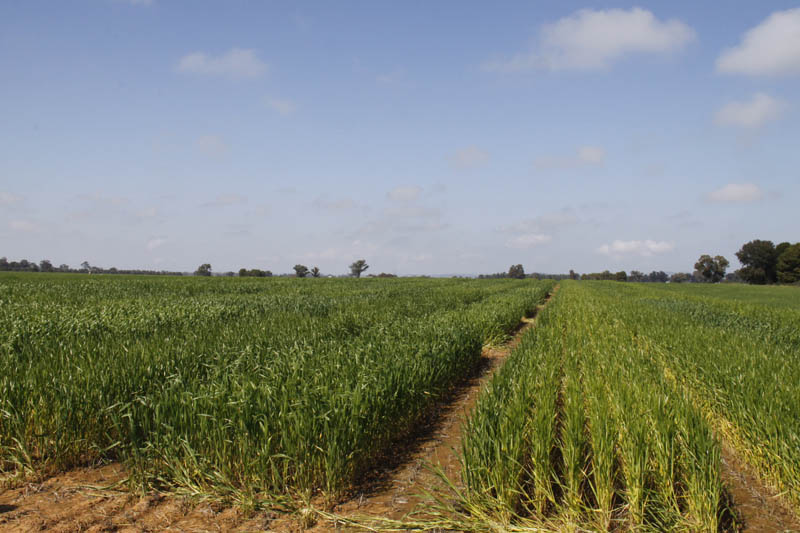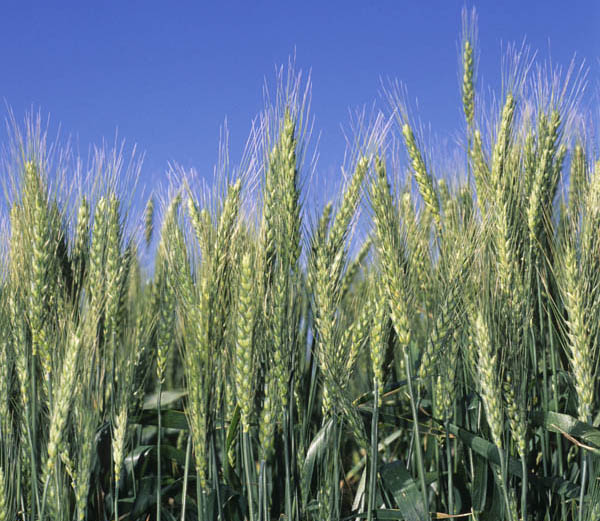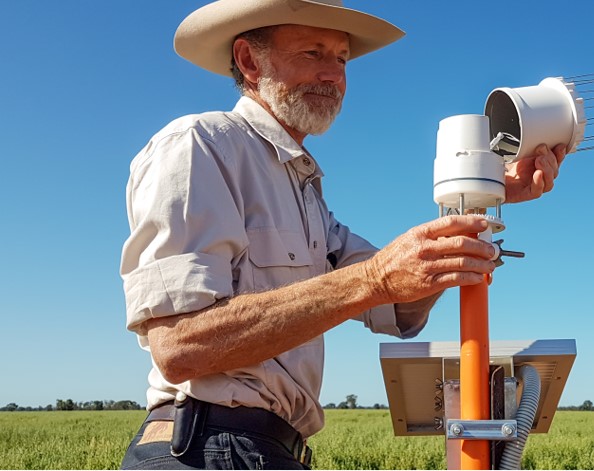International factors including the war in Ukraine, short supply of higher grade east coast wheat and tightening global wheat stocks ensured that wheat prices remained elevated. International demand also boomed for NSW wheat, with exports reaching new record levels of approximately $3.3 billion, 13% higher than the previous record set last year. NSW remained extremely competitive in Asian export destinations, with the region making up five of NSW top six export market destinations in 2023-24. To make way for these markets, exports to Italy declined sharply, but mainly on lower supply of export grade durum wheat varieties from North West NSW owing to unfavorable seasonal conditions.
- GVP $3.6 billion est. Down 7% year-on-year.
- Local prices have mostly returned to parity with international indicators.
- Exports valued at a record $3.3 billion.


Production
The drier reprieve during June and July was followed by four consecutive months of very much above average rainfall for the majority of the NSW grain belt. 140 These conditions led to widespread flooding in inland NSW and complete or partial crop losses for some crops on flood plains or adjacent to water ways. Yields were also impacted, with average yields estimated to be down 14% on the year prior, albeit still well above the long term average. 1 The cool and wet harvest also delayed harvest significantly, with the bulk of NSW crop being harvested from December and into January. 128 Overall production reached an estimated 10.26 million tonnes of wheat, making it one of only four years historically to exceed the 10 million tonne threshold in NSW. 1
Price
Despite recent falls in H2 grade wheat prices to around the $400/tonne level, basis for H2 grades have narrowed to parity or reached price premium levels compared to international indicators, with the exception of Hard Red Winter (HRW) wheat futures due to the lingering drought conditions hampering parts of the US. 126 Adverse harvest weather conditions on the Australian east coast impacted crop quality, and as a result significant price divergence of $100/tonne or more between higher milling grades and AGP1 temporarily occurred, before prices began converging again in 2023. 122
H2 Delivered Sydney - Price Differentials 121 122
- H2 Syd to CME HRW Futures
- H2 Syd to CME SRW Futures
- H2 Syd to Russia Milling
- H2 Syd to EU Grade 1
Macroeconomic Conditions
Global Stocks and Stocks to Use 124
- Top 7 Exporters - Ending Stocks
- ROW - Ending Stocks
- Global Stocks to Use (RHS)
Trade
Lower wheat production was partially reflected by a 7% reduction in NSW export volumes, however despite this NSW wheat exports increased 13% to new record levels of $3.3 billion. 35 This was due to a substantial increase in export prices underpinned by the short supply of higher quality grade wheat, particularly from the eastern states. Markets also became more concentrated in 2022-23 with 79% of wheat export sent to our top six export markets versus 64% to the same markets over the 10 year average. 35 Notable market developments include a 56% increase in trade to the new number one market of China to $874 million, owing to grain security concerns resulting from the Russia’s invasion of Ukraine. This same factor was also responsible for displacing grain from traditional Black Sea grain markets, and as a result NSW exported $264 million worth of wheat to Iraq after an eight year market hiatus. 35 Offsetting these gains was a 64% reduction in wheat exports to Italy valued at $53.3 million in 2022-23, with seasonal conditions reducing the amount of exportable grade durum wheat which dominate NSW exports to this market.
On a 12-month rolling basis, the NSW export price to domestic port price differential reached 10-year highs, however the average differential recently declined substantially in the second half of the year. d
Key NSW Export Markets 35
- China
- Vietnam
- Philippines
- Korea, South
- Iraq
- Indonesia
- Other
Outlook
The wheat market will continue to be influenced by the Russia-Ukraine war, with any further deterioration likely to influence sentiment for the wheat market. Particular attention will be placed on prospects of any revamp of the Black Sea Grain Initiative, which Russia exited from in July 2023 citing unmet demands to continue. The initiative remains in a state of flux and will unlikely be fully resolved independently of the broader war in Ukraine.
Global production is expected to increase again, with El Nino conditions being factored into a forecast lift in production in the US, Argentina, Canada and China, offset by a large reductions in production from Australia and Russia. Global ending stocks are also forecast to tighten for a fourth year in a row which should remain supportive of prices. 124
Stronger Primary Industries Strategy
Climate Change Research Strategy
Strategic Outcome

- 5.1 Expand options for cost effective emissions reductions or avoidance

Empowering farmers to build resilience and adapt to climate change
NSW primary industries sector operates in one of the most variable climates in the world. Australian farmers are resilient and adaptable – they are innovators on the frontline in the battle against climate change – but as the rate and severity of climate change is predicted to intensify, the challenges of droughts and floods, storms and bushfires, and pests and diseases will increase.
Climate projections indicate that areas of NSW will face decreasing winter and spring rainfall, increased intensity of extreme rainfall events, increasing day and night temperatures, fewer frosts, and harsher fire weather. As well as the challenges of a changing climate, energy security and energy affordability is also a concern for the sector. Whether it’s pumping water for irrigation, fuelling tractors and boats, or refrigerating packing sheds, energy is one of the biggest costs for many producers.
But there are also opportunities for the sector. A changing climate can provide untapped opportunities for new industries and for existing industries to expand into new areas of NSW. NSW DPI’s Climate Change Research Strategy is supporting farmers and growers as they navigate these challenges and opportunities. The strategy will ensure that an investment of more than $29.2 million in research and innovation will identify energy supply and demand solutions, carbon market and emission reduction opportunities, and climate resilience building programs, to help build resilience in the sector.
As part of the strategy, NSW DPI is conducting seven pilot projects in energy-intensive industries including dairy, horticulture and feedlots to show how innovative technologies and practices can improve on-farm energy efficiency, energy security and productivity, and reduce on-farm energy use, costs and emissions. The technologies include: solar thermal chilled water storage and control systems for milk cooling; electrification of irrigation pumps powered by an above ground solar photovoltaic tracking system to enable livestock grazing; solar photovoltaic and battery storage systems; electrification of LPG and diesel fuelled equipment; and peer-to-peer energy trading. Research results will help farmers better understand, manage and adapt to climate change. NSW DPI will use the results to develop future policies and programs for the long-term sustainability of the sector.


